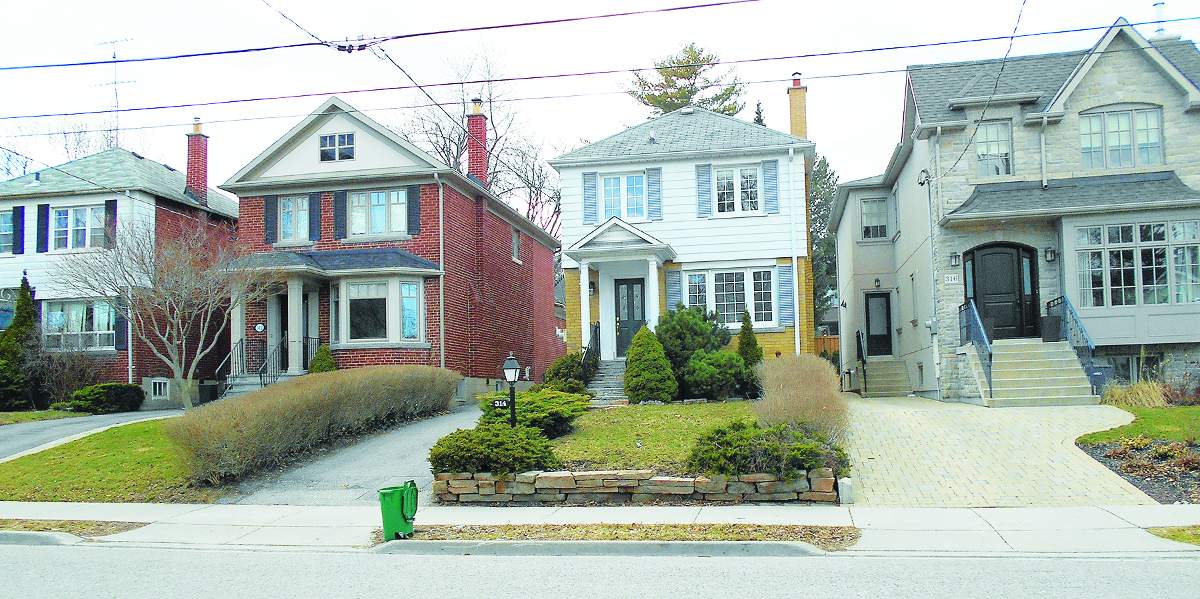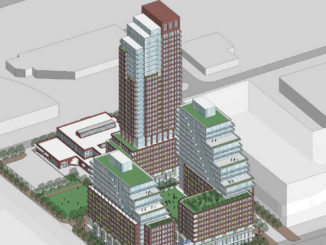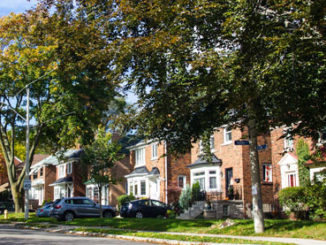 “In Leaside when you look down the street you see driveway entrances of consistent grade, and when you stand in front of the house the dominant feature is the front entrance and the living room, not the garage. We wanted to retain this character.”
“In Leaside when you look down the street you see driveway entrances of consistent grade, and when you stand in front of the house the dominant feature is the front entrance and the living room, not the garage. We wanted to retain this character.”
This was how Jane Pitfield explained her reasons for championing a new bylaw in 2000 to prohibit below finished grade garages in Leaside, when she was Leaside’s councillor in the recently amalgamated City of Toronto. She was testifying at a recent Ontario Municipal Board hearing on an LPOA appeal of the Committee of Adjustment’s decision to approve a below finished grade garage at 314 Rumsey Rd. (despite the staff report that recommended against).
So what is a “below finished grade”1 garage? What it is not is a reverse (negatively) sloped driveway. These driveways, widely considered to represent a safety hazard, a flooding hazard, and a haven for litter, were outlawed under the consolidated zoning bylaw in 2013. However, this provision, while universally accepted, has led to a rise in “jumped up” houses that attempt to, in effect, add a third storey, while minimizing height variances and abiding by the prohibition on reverse slope garages. The consolidated bylaw addresses negative slope driveways but does not prevent the flattening of the driveway (minimal positive slope) and creation of driveway pits/walls caused by excavation of materials.
So why is this an issue? It’s all about Toronto’s topography, which generally slopes towards the rivers running into Lake Ontario, and to its tributaries. Leaside slopes towards the Don River valley to the east, and to Don River tributaries, Burke’s Brook in north Leaside and Walmsley Brook in central and north Leaside. Therefore, on north-south streets the slope condition (facing uphill) tends to present on the west side of the street and either the north or south depending on location.
By regulating finished grade the Leaside No. 1916 bylaw maintains unimpaired views, both along the street relative to the height of driveways entering the street, and face-on to individual lots.
So where does this stand? The LPOA was at the OMB on April 5th to appeal a case where the Committee of Adjustment failed to uphold the specific prohibition in the Leaside bylaw. But the longer term issue is that the consolidated City-wide bylaw does not include the finished grade provision, but at some point it will come into force and the Leaside bylaw will no longer apply. The consolidated bylaw is currently under appeal at the OMB, and so the LPOA will join the appeal in an effort to maintain Leaside Bylaw No. 1916.
If the LPOA fails, we will likely see a lot more of those three-storey homes with trenching from the garage door to the street, and a lot fewer streets like Rumsey from Broadway to Glenvale with its lovely view along the street.
Remember, Leaside is a “designed landscape”2 and holds an important position in the history of planning in this country. It is one of the first three model new towns in Canada based on the garden city principles of Ebenezer Howard (and the first in Ontario). It’s evident that Leaside’s builders worked with the form of the land, and did not obliterate it. Preservation of the elements which characterize the streetscape is essential to maintaining its historic value.
Continuation of this bylaw (or similar provision) is clearly vital to maintaining Leaside’s distinct character.
1. The finished ground level is defined in Leaside Bylaw No. 1916 as “any point adjacent to the main wall of the dwelling exclusive of any embankment, berm or driveway ramp.”
2. Cultural Heritage Landscape of Leaside, 2015.





